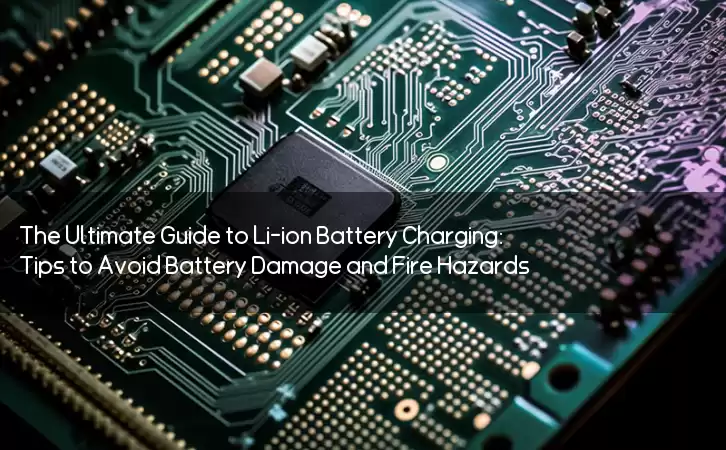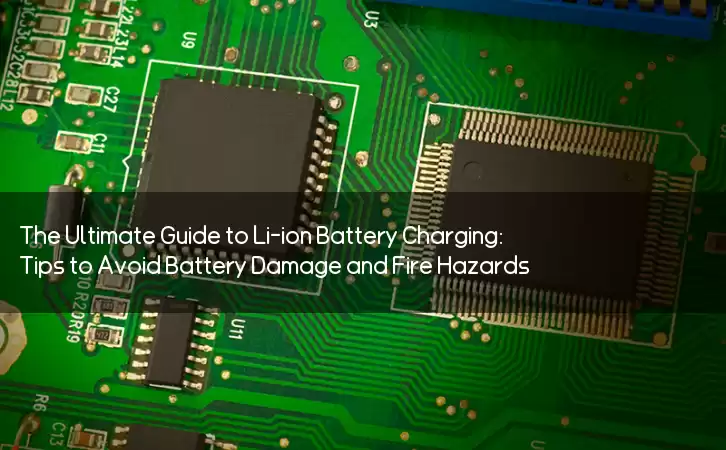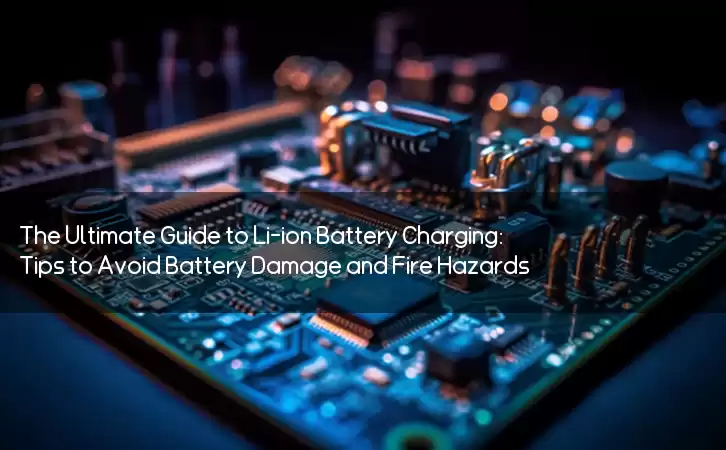Information Center
The Ultimate Guide to Li-ion Battery Charging: Tips to Avoid Battery Damage and Fire Hazards
Published:2023-07-01 20:31:50 Author:Green WCND Views:69Li-ion Battery Charger Instructions: Everything You Need to Know

Over the last few years, Li-ion batteries have become increasingly popular for their use in portable electronic devices such as smartphones, tablets, and laptops. These batteries are long-lasting and have a high energy density, making them the perfect choice for today’s technology-driven world. However, just like any other rechargeable batteries, Li-ion batteries have to be charged correctly to maintain their longevity and efficiency. This is where the Li-ion battery charger comes into play.

A Li-ion battery charger is a device that is used to charge Li-ion batteries. Charging a Li-ion battery requires a specific set of instructions and precautions to avoid damaging the battery, the charger, or any other connected devices. Here are some essential Li-ion battery charger instructions that you should follow:

1. Always Read the Manual
Before using your Li-ion battery charger, you must read its manual from start to finish. The manual will provide you with essential information about the charger, including its specifications, safety precautions, and instructions on how to use it correctly. This information will help you avoid damaging the charger and the battery.
2. Choose the Right Charger
Not all Li-ion battery chargers are created equal. Some are designed to charge specific types of Li-ion batteries, while others can charge multiple types. Make sure to choose a charger that is compatible with your Li-ion battery.
3. Charge the Battery in the Right Environment
Li-ion batteries are sensitive to temperature and humidity changes. You should charge your battery in a cool, dry, and well-ventilated environment to avoid overheating and overcharging. Do not expose your battery to direct sunlight or extreme temperatures, as this can damage the battery and potentially cause a fire.
4. Connect the Charger to a Power Source
Connect your Li-ion battery charger to a power source, such as an electrical outlet, a car cigarette lighter, or a USB port. Some Li-ion battery chargers come with adapters, while others have built-in adapters. Ensure that the power source is stable and consistent to avoid damaging the charger or battery.
5. Connect the Battery to the Charger
Connect your Li-ion battery to the charger and make sure it is properly seated. You will hear a click or feel a slight tug when the battery is secured. Do not force the battery into the charger, as this can damage the battery connectors or the charger.
6. Monitor the Charging Process
Most Li-ion battery chargers have LED lights that indicate the charging progress. A red light indicates that the battery is charging, while a green or blue light indicates that it is fully charged. If your charger does not have an LED light, refer to the manual for information on monitoring the charging process.
7. Do Not Overcharge the Battery
Overcharging a Li-ion battery can damage the battery and potentially cause a fire. Most Li-ion battery chargers have an automatic shut-off feature that stops charging the battery when it is full. If your charger does not have this feature, refer to the manual on how to monitor the charging process and prevent overcharging.
In conclusion, a Li-ion battery charger is an essential device for charging Li-ion batteries correctly. Following the above Li-ion battery charger instructions, including reading the manual, using the right charger, charging in the right environment, connecting to a power source, monitoring the charging process, and preventing overcharging, will help you avoid damaging your battery and charger while ensuring good battery life. Always exercise caution and follow the instructions when using your Li-ion battery charger.
Power Adapter Design and Customization Guide for Portable Electric KettlesI. Common Design Types for Portable Electric Kettle Power AdaptersPortable electric ke···
I. Common Design Types of Power Adapters External Independent Type (Most Common) Design: A standalone adapter (e.g., "black brick") connected to the p···
Handheld Vacuum Cleaner Power Adapter Selection GuideIntroductionHandheld vacuum cleaners have become a mainstream tool for household cleaning due to their port···
Drill Power Adapter Selection Guide.drill-container { font-family: Arial, sans-serif; line-height: 1.6; max-width: 800px; margin: 0 auto; padding: 20px; } .dril···





